

Matt Campbell
2026 MG U9 review
3 Hours Ago
The city-sized Renault Captur now offers a sporty R.S. Line version. But is it all show and no go? James Wong finds out.

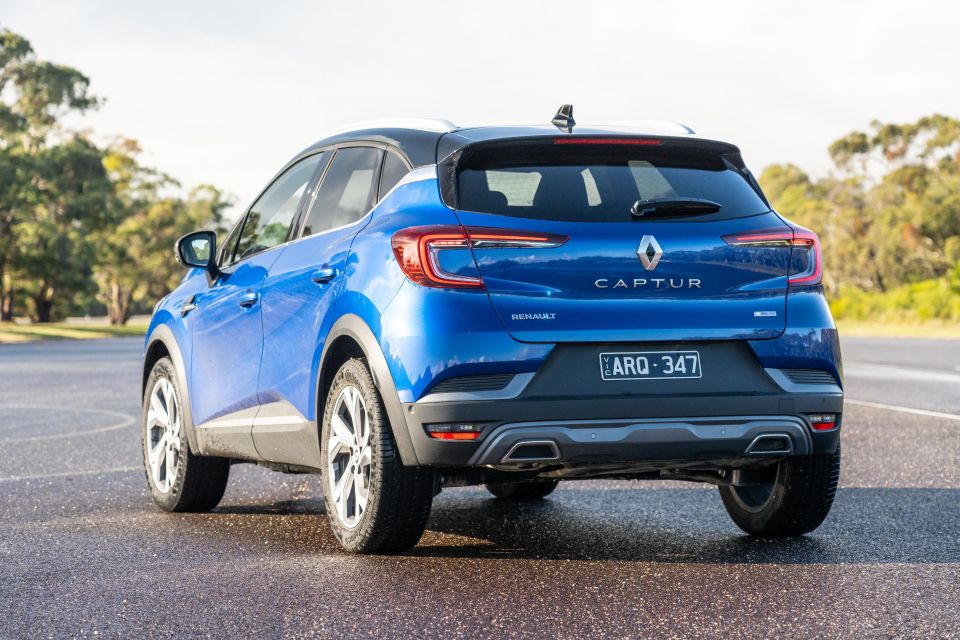

Quickly see how this car stacks up against its competition. Select any benchmark to see more details.
Where expert car reviews meet expert car buying – CarExpert gives you trusted advice, personalised service and real savings on your next new car.
Like most French-branded cars these days, the Renault Captur is nowhere near as popular in Australia as it is in Europe, particularly its native France.
Consistently a Top 20 contender throughout the EU, the Captur’s sales performance in Australia, while much improved with this latest-generation model, is far more modest by comparison.
Over the first half of 2022 the French crossover owns just under 3.0 per cent of the Light SUV market, led by the likes of the Mazda CX-3, Kia Stonic and Toyota Yaris Cross – which between the three of them account for more than 1 in 2 Light SUV sales Down Under.

That’s not necessarily an indication of the Captur’s substance, however. It remains a compelling left-of-field choice in a size segment dominated by value-led Asian brands, and presents as a more premium, style-led offering.
Speaking of style, the version we have on test here hopes to Captur your attention with its swish looks. The 2022 Renault Captur R.S. Line draws upon the brand’s sporting heritage and joins a slew of sport pack-themed variants offered throughout the new vehicle market.
At over $40,000 plus on-road costs, though, it’d hope to offer as much substance as style, given it not only lines up with Light and Small SUV competitors on price, but isn’t far off some premium-badged rivals either.
So, is this little French SUV a diamond in the rough?
The Captur R.S. Line is the flagship version of the model line in Australia, and is priced from $40,800 plus on-road costs after a recent price adjustment effective as of July 1, 2022.
It positions the Captur of something of a premium offering, and straddles the Light and Small SUV segments in both price and size when you consider its big boot capacity (more on that in a bit).
2022 Renault Captur pricing (as of July 1):
Prices exclude on-road costs
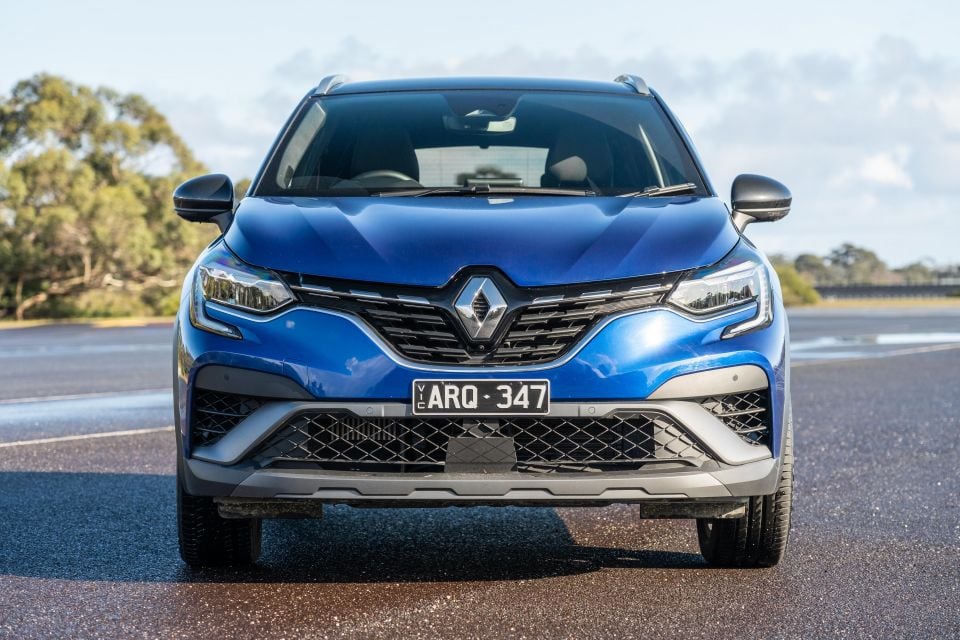
Key rivals include:
Prices exclude on-road costs unless specified (D/A)

Buy your new car without the stress. It's fast, simple and completely free.

Great service from Travis and team, second time I have used this business would not hesitate to recommend them to anyone
Craig C.
Purchased a Ford Ranger in Sunshine Coast, QLD
CarExpert helped Craig save thousands on his Ford Ranger, now let us save you on your next new car.
Find a dealConsidering its size and price positioning, the little Captur has quite a posh cabin.
Unlike many other light car-based rivals that revert to cheaper, hard-wearing plastics throughout much of the interior and don’t quite feel befitting of the high-$30k to low-$40k price bracket, the Renault presents as one of the best cabins in the Light SUV class and is more than competitive with rivals in the class above.
The materials used for the touchpoints as well as upper-tier surfaces like the dashboard and door tops all look and feel upmarket, and the high-resolution digital instrument cluster and distinctive portrait-oriented touchscreen add a touch of wow-factor.
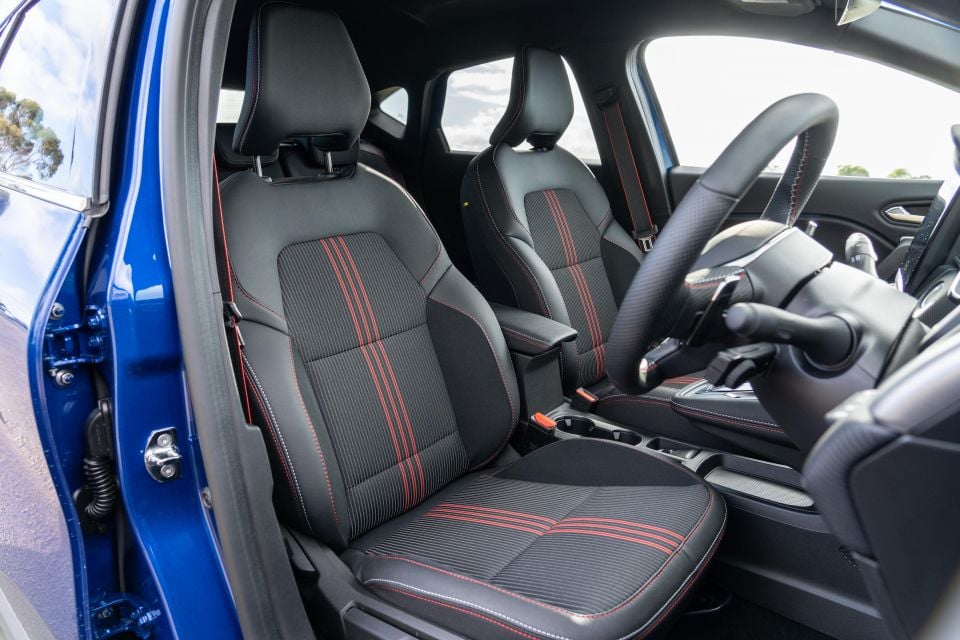
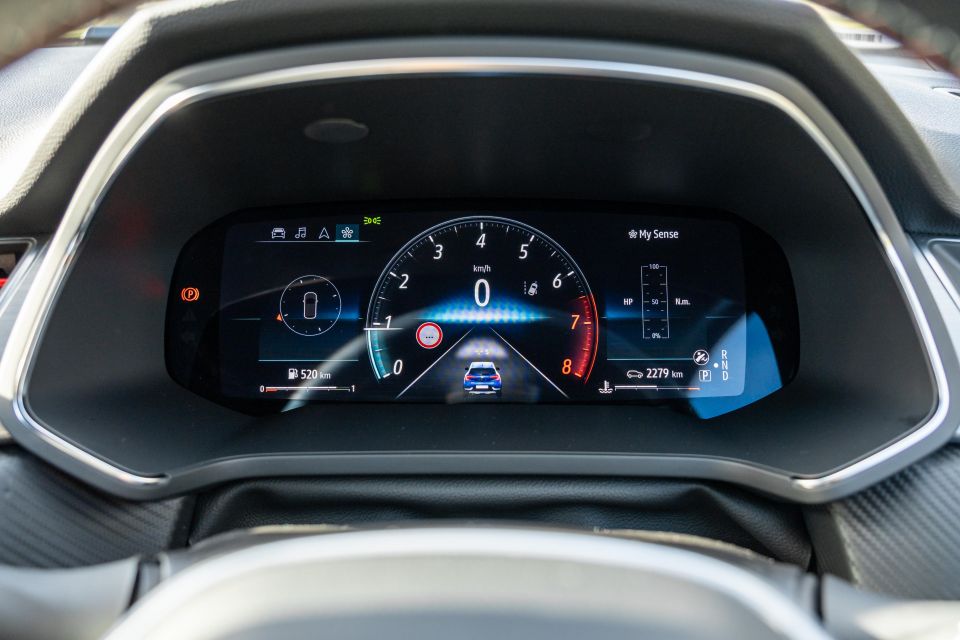
Up front the driver and front passenger are treated to comfortable seats with sporty R.S. Line textile cloth inserts and leather bolsters. I personally am a big fan of textile seats because of the extra comfort and better resistance to the elements compared to leather, but some might find the change to this upholstery from the Intens’s leather to be a downgrade.
The chunky leather steering wheel with perforated section looks and feels upmarket, and the layout of the multifunction switchgear means everything should fall within reach of your thumbs or fingertips. I will note, however, that Renault’s quirky media stalk behind the right-hand side of the steering column does take a moment to get used to if you’re not used to French cars, but it becomes second nature over time.
Renault has also, thankfully, removed the two-stage cruise control activation for the standard adaptive cruise control, and centralised all associated switchgear on the wheel, much like most rival brands and models.
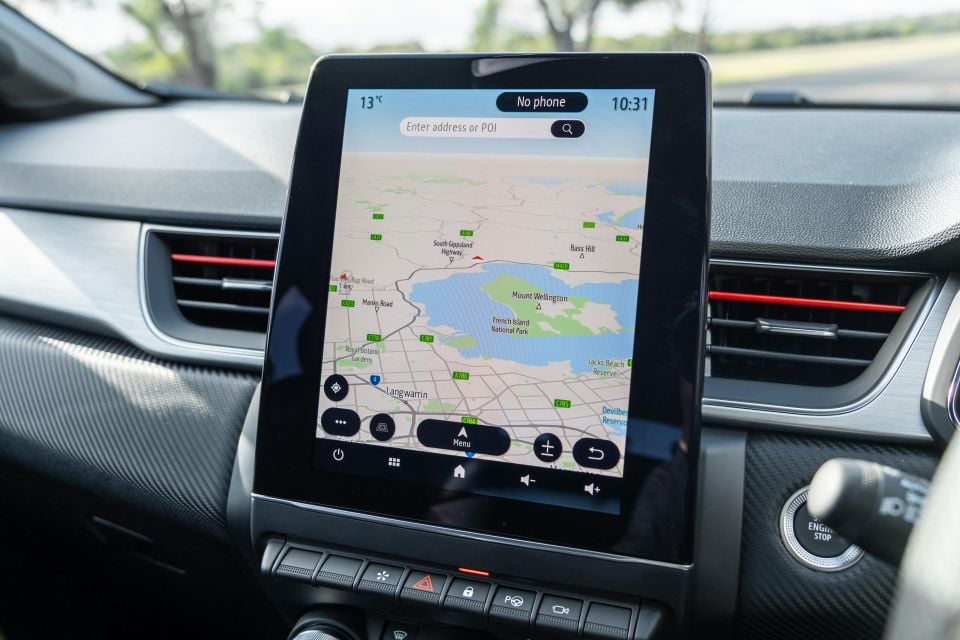
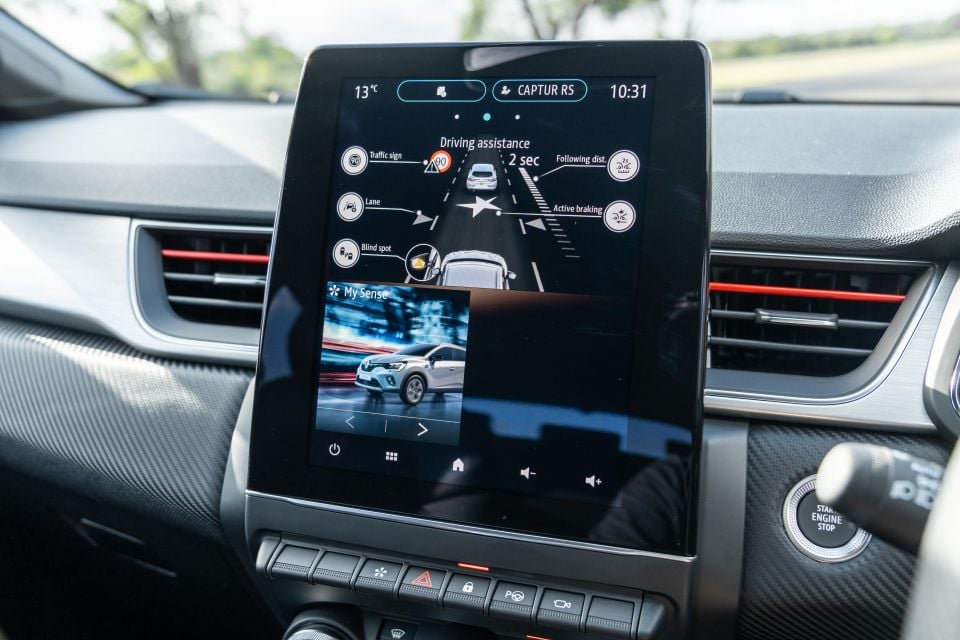
The 9.3-inch vertical touchscreen infotainment display is well-featured, at least on paper.
Renault has been doing these portrait-oriented displays for a while now, and it’s a nice point of difference to most other brands.
The display itself is angled to the driver and well-placed in the cabin so you don’t have to really look down or away from the road when you glance over to it, but in typical French fashion there are… erm… quirks.
Some of the menus are a little convoluted and some things as simple as changing the ambient light colour or the layout of the digital instrument cluster aren’t located where you might think they are – spoiler alert, it’s in the drive mode configurator not in the light or display settings in the options menu.
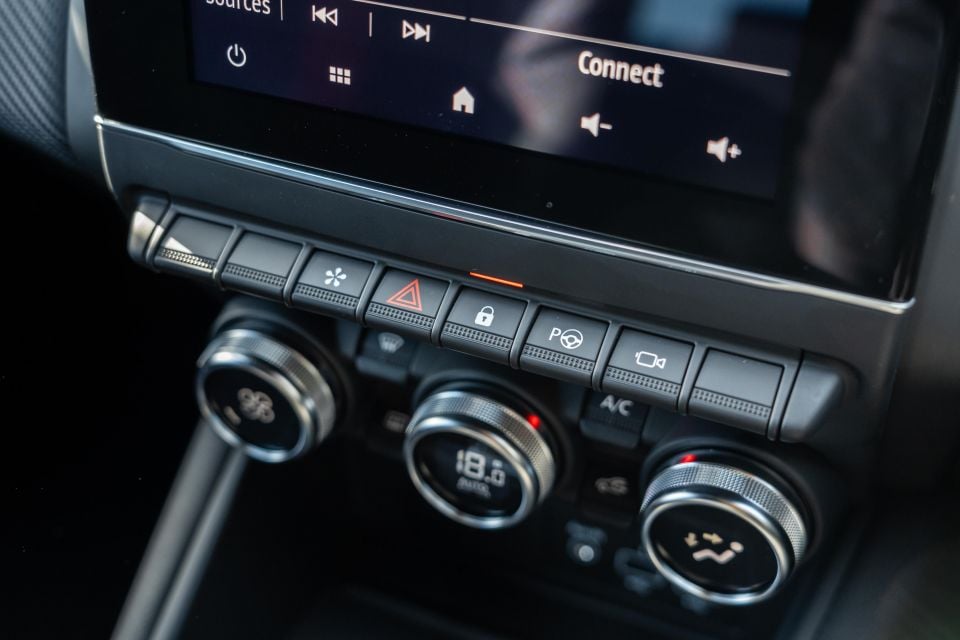
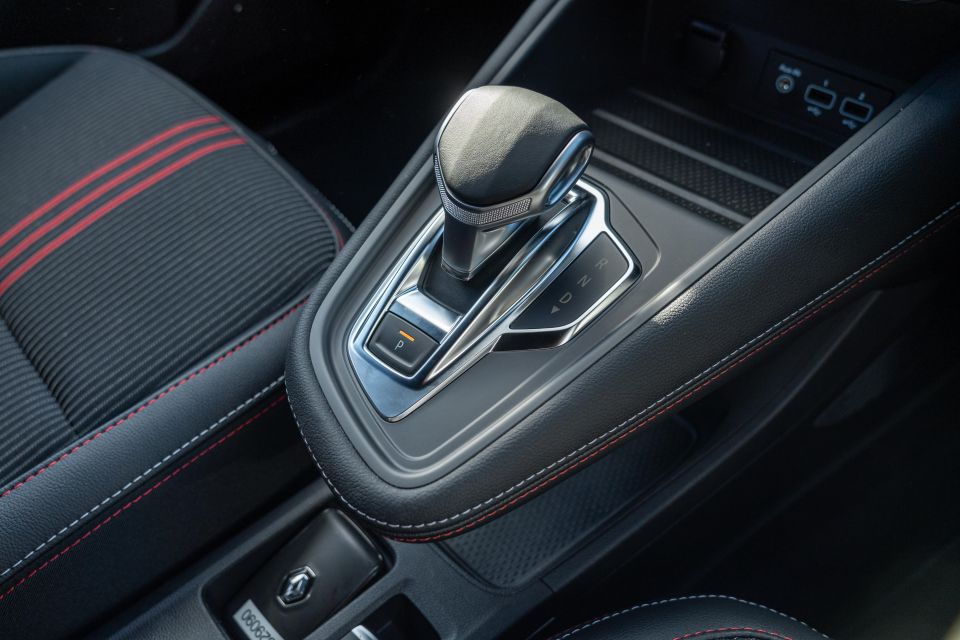
Load times are little laggy and some functions like the surround-camera system are a little annoying – the Captur clearly uses the same cameras as the related Nissan Juke because resolution is grainy and struggles in low light.
The embedded satellite navigation system is fine and it’s hooked up to a nine-speaker audio system. It’s not quite Bose or B&O good, but it does the job.
Below the display are cool toggle-style switchgear for key functions like door locks, parking sensors/cameras as well as driving mode, and thankfully Renault as maintained physical switchgear for the climate controls. The rotary dials have Audi-esque LCD displays in them too, which are a nice touch.
In high-spec versions of the Captur there’s a shift-by-wire controller sitting atop a ‘floating’ centre control. A storage tray for your phone sits ahead of it with access to USB-C points, but it couldn’t fit my iPhone 13 Pro Max properly.
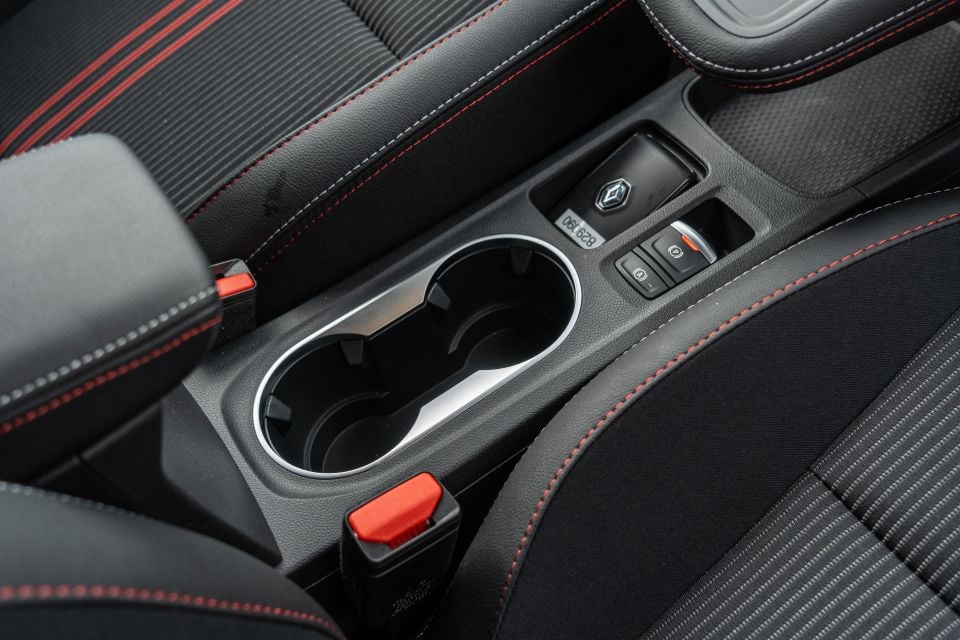
Beneath the floating centre console is another storage shelf with grips that can accommodate odds and ends like phones, wallets, keys and the like, and between the front occupants are two cupholders positioned behind the electric park brake and a slot to hold the Apple Mouse-like vehicle key.
There’s also a lidded centre storage bin with matching contrast stitching to the seats, though in typical Light-class fashion it’s quite small.
Renault has done a good job at implementing good storage solutions and upmarket-feeling presentation for the price point, and it’s a real shame Australia doesn’t get the new-generation Clio hatchback which has an almost identical cabin, because it’ would make it a benchmark in the Light Passenger segment.
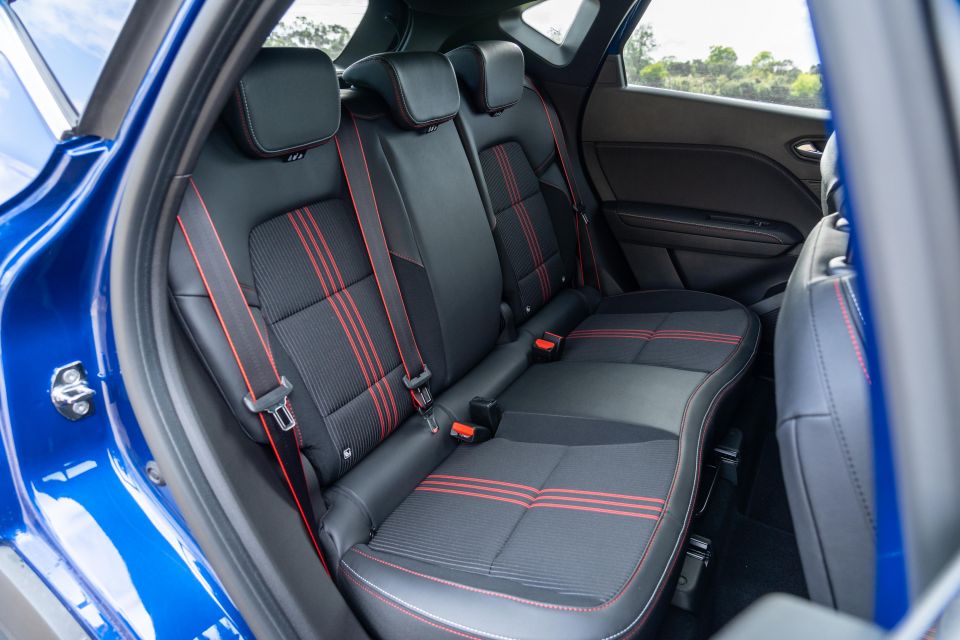
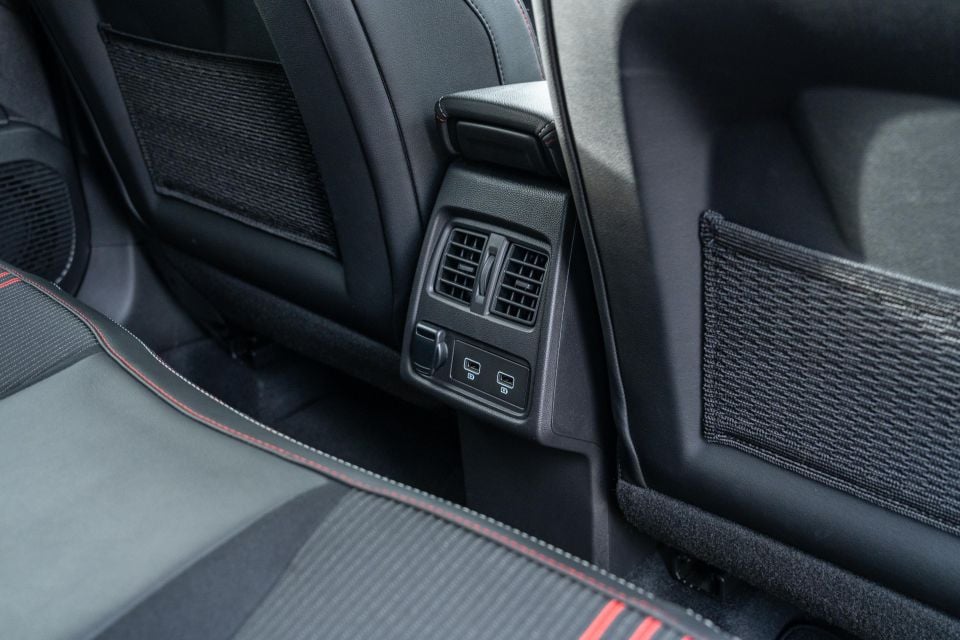
Usually the second row in these kinds of cars are virtually just for show, but the Captur’s rear accommodation is surprisingly versatile and well-appointed.
The rear bench slides on rails to offer more legroom or more boot space, which is pretty unique at this end of the market, and there’s also rear air vents which again isn’t replicated in the light segments often.
Netted map pockets behind both front seats, USB-A charge points and a 12V socket headline the rear amenities, and there’s even a fold-down rear centre armrest with cupholders. Impressive.
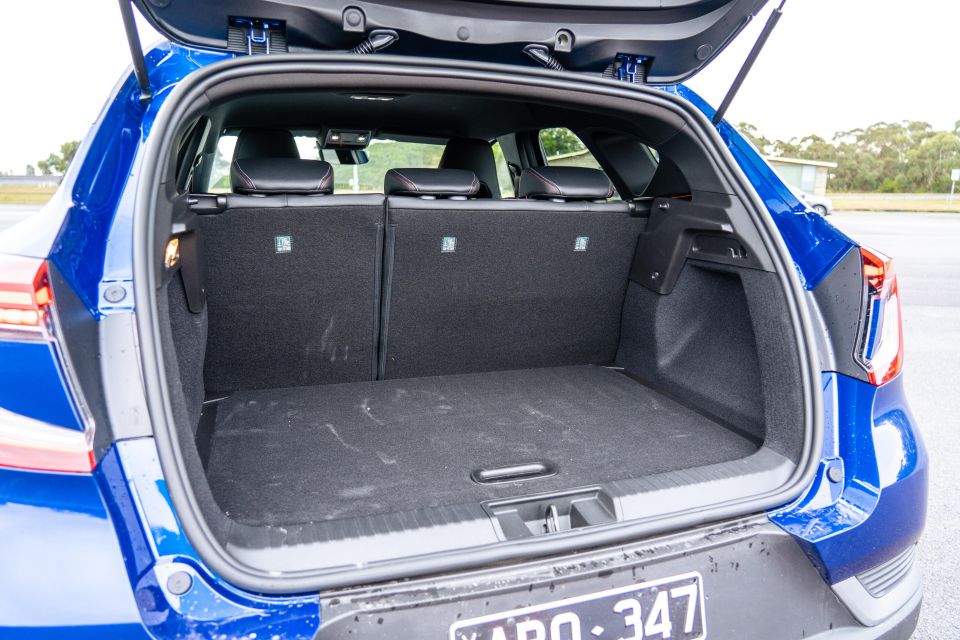
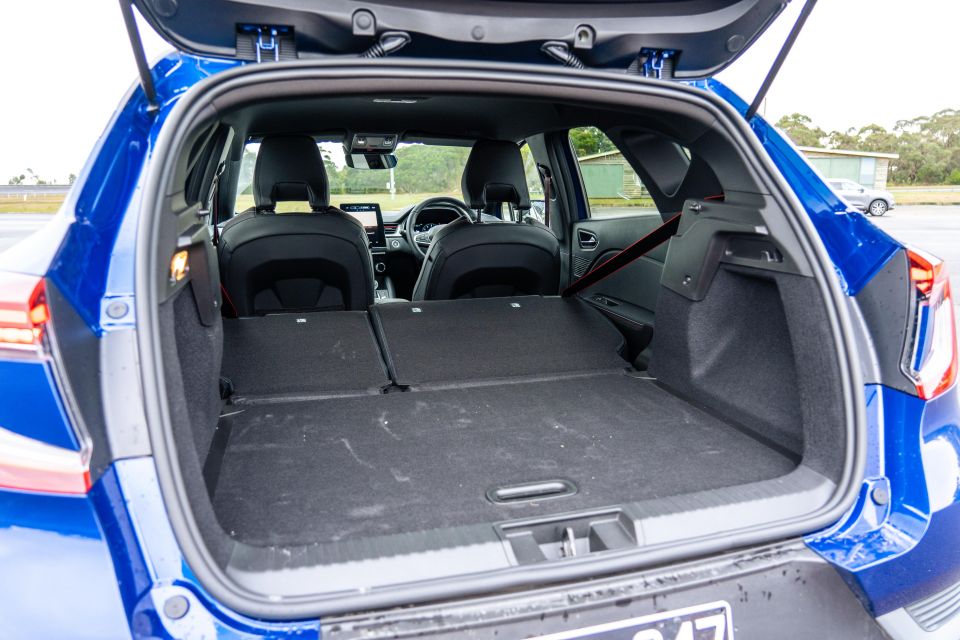
Boot space is quoted at 422L with the rear seats in place, or 536L including under-floor storage and the rear bench slid forward.
Fold the second row down and there’s 1275L. You can adjust the boot floor to minimise the step between the boot floor and seatbacks too.
I can attest it’s an impressively practical luggage area for such a small car, having helped a close friend move houses. You can really fit a lot of boxes back there.
Under the boot floor there’s a temporary space-saver spare wheel.
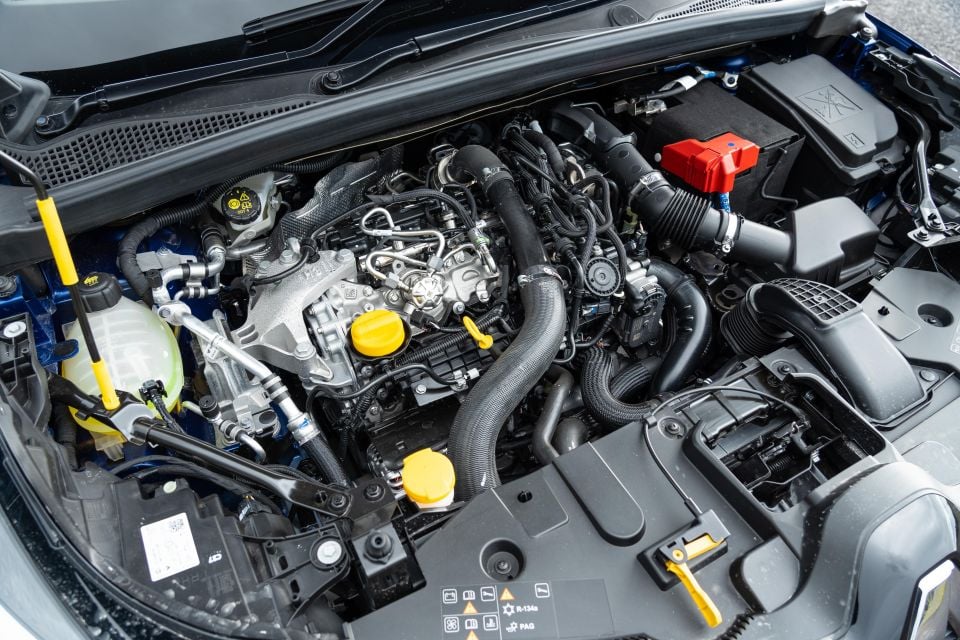
Like the wider Captur range in Australia, the R.S. Line is powered by a 1.3-litre turbocharged four-cylinder petrol engine driving the front wheels via a seven-speed dual-clutch automatic transmission.
Outputs are quoted at 113kW (5500rpm) and 270Nm (1800rpm), making the Captur one of the gruntiest offerings in the Light SUV segment. Renault claims a 0-100 time of 8.6 seconds, which again is at the pointy end of the class.
It’s worth noting versions of this 1.3-litre turbo feature in a number of other models, including the larger Renault Arkana, the new-generation Nissan Qashqai, as well as 180, 200 and 250e-badged models across the Mercedes-Benz A-Class, B-Class, GLA and GLB ranges – this motor was jointly developed by Renault-Nissan and Mercedes.
Fuel consumption is rated at 6.6L/100km on the combined cycle, with 95 RON premium unleaded required as a minimum for its 48-litre tank.
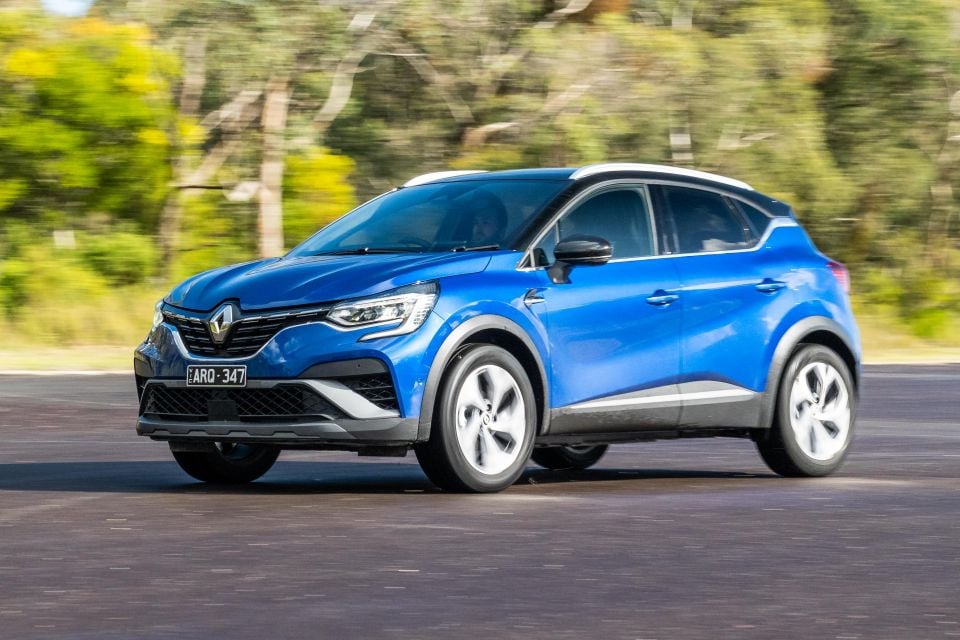
Despite the reference to F1-inspired bits and Renault Sport paraphernalia as part of the Captur’s R.S. Line equipment portfolio, the top-spec Captur drives very similarly to lesser grades.
That’s not necessarily a bad thing, given the Captur for the most part has been well-received by the CarExpert team for its torquey drivetrain, and big-car feel on the move.
It’s a similar story here. The Captur while punchy feels as if it’s been tuned for efficiency, as in its normal drive mode can be a little leisurely to respond to driver inputs particularly at low speeds.
However, sink your boot in and the Captur is surprisingly athletic in a straight line, particularly in terms of rolling acceleration. It managed to put a smile on my face on a freeway on-ramp as it genuinely surprised me with its performance.
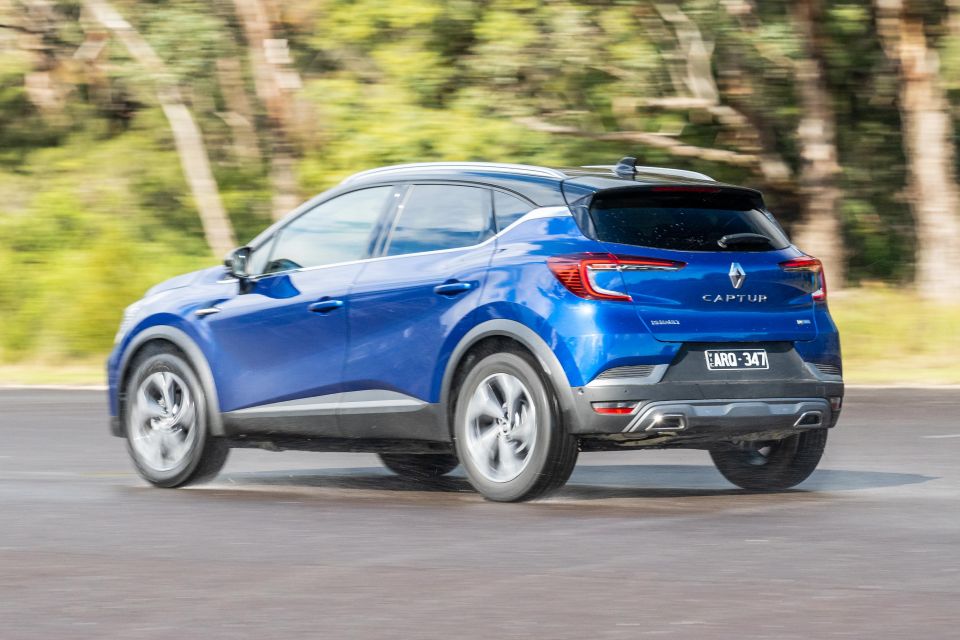
It will squirrel about under heavy throttle, given the front wheels (despite being quite big with chunky tyres) have to handle hot hatch levels of torque at full tilt.
The seven-speed dual-clutch automatic isn’t the best I’ve sampled. While many people will lament the occasional low-speed hesitation and laziness of Volkswagen’s DSGs, the Captur’s unit is even less refined and can at times be unpredictable.
Even after a week of driving the Captur every day, I’d still get inconsistent response off the line and at low speeds, at times not getting enough acceleration and then getting too much after pressing the accelerator a little harder. That’s despite Australian models not being fitted with idle stop/start technology like overseas markets.
Another quibble we experienced is the occasional delay switching from Reverse into Drive, or vice versa, when doing three-point turns or rushed parking manoeuvres. At times the Captur’s DCT would take so long there’d be an awkward roll back on an incline, which might frighten you the first few times it happens.
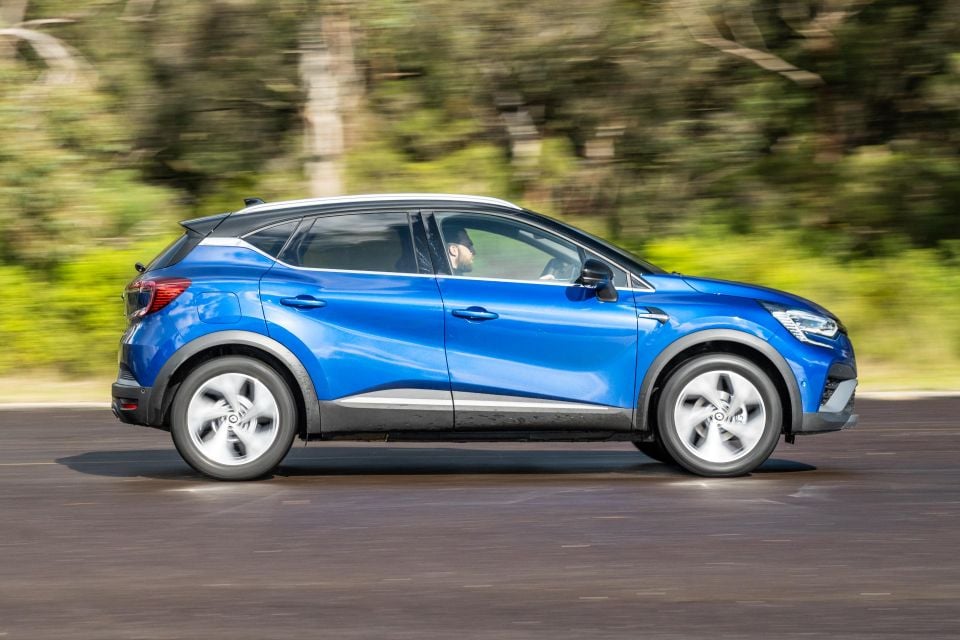
Where expert car reviews meet expert car buying – CarExpert gives you trusted advice, personalised service and real savings on your next new car.
Once you’re moving, though, the Captur is quite a relaxed and almost luxurious thing to drive, at least for this size.
The big 18-inch alloys shod in fat 215/55 Continental tyres give the Captur quite a substantial footprint, giving a sense of security even once you’re cruising at freeway speeds. Better yet, the high seating position makes the little Renault feel like a much larger car – I was almost eye level with the driver of an Audi Q5 driving side-by-side.
Road and wind noise is better suppressed than most rivals in the segment, though at this point you’re also competing with the likes of the Mazda CX-30 which is usually considered a leader in the compact segments for refinement, as well as larger vehicles from other brands.
Once the road gets twisty, the Captur again is hardly more R.S. than any other variant, but its accurate driver controls and limited body roll make for a pretty neutral handling balance. Its large footprint and secure, sure-footed character inspires confidence regardless, even in adverse weather conditions.
It mostly rides well too, but those big alloys can get a little busy over consistent smaller imperfections when travelling in the suburbs or the city. Then again, most of the class is the same.
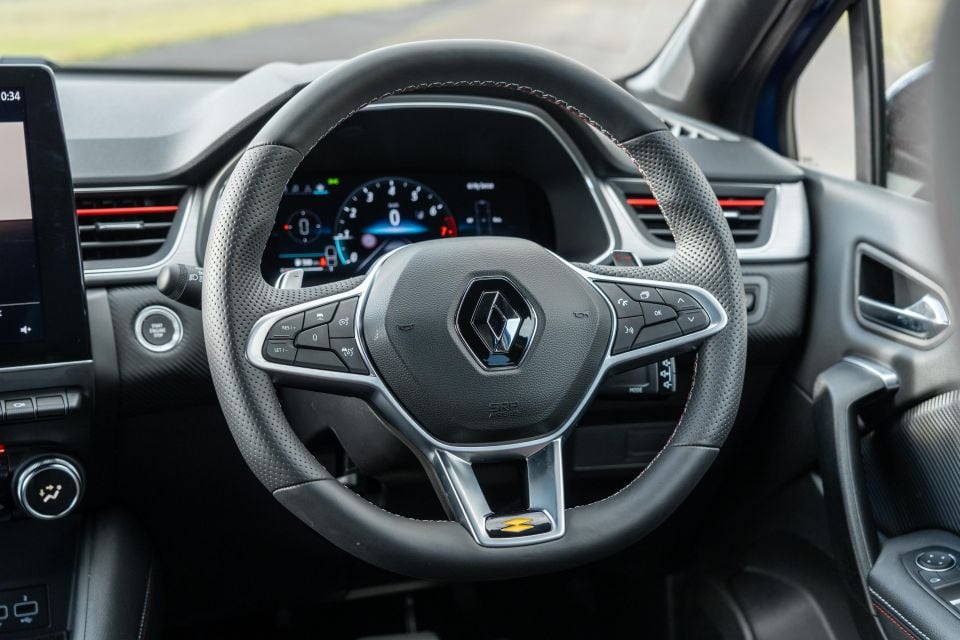
Pulling on the paddles results in fairly quick gear changes befitting of the dual-clutch transmission type, but again as mentioned earlier this isn’t a stand-in Renault Sport model with proper performance intentions – it’s just a style pack.
Renault’s driver assistance features, like the transmission, lack the refinement and user friendliness of competing brands such as Hyundai, Mazda and Volkswagen.
While the Captur lists lane-keep assist as a standard feature, the most it ever really did even after fiddling with the settings is vibrate the steering wheel and sound a warning, but never any noticeable steering assistance that would necessitate the ‘assist’ label. Further, it lags behind rivals in not offering a centring aid for semi-autonomous driving ability, and the surround camera system is clearly borrowed from Nissan because it’s average in quality at best.
I do like that Renault has moved away from the two-step cruise control activation like you’ll find in the ageing Koleos (on switch located on the centre console, set/reset on the steering wheel), and the adaptive cruise function is accurate and reliable if a little conservative at times with braking early when a car cuts you off – happens a lot in Australia.
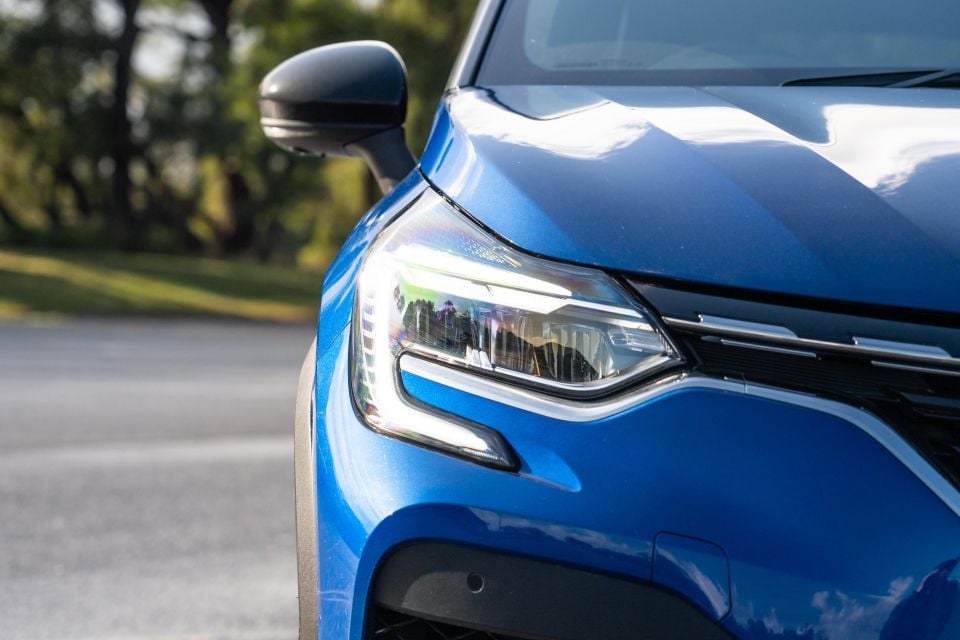

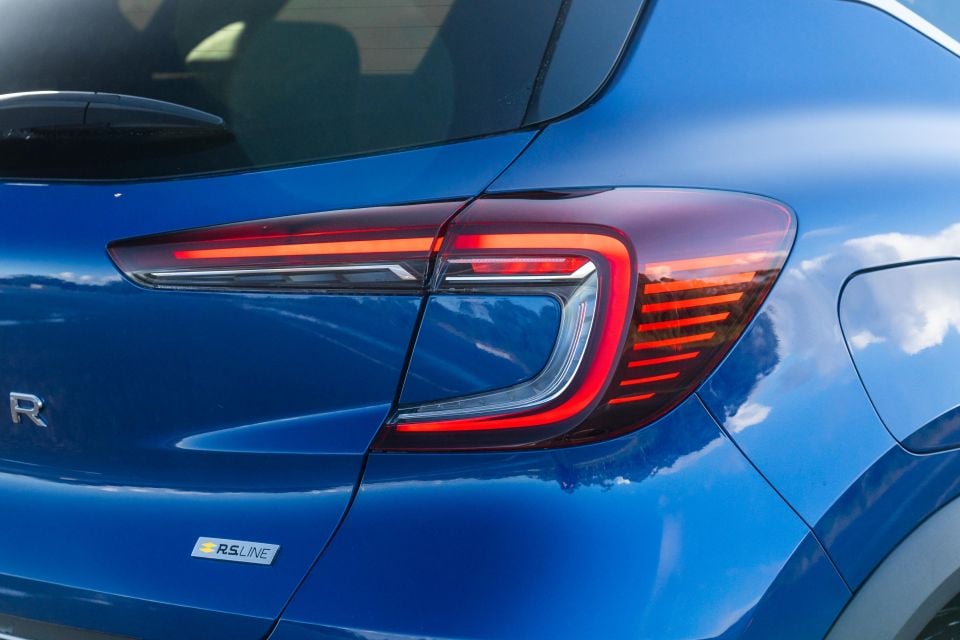

Captur R.S. Line highlights:
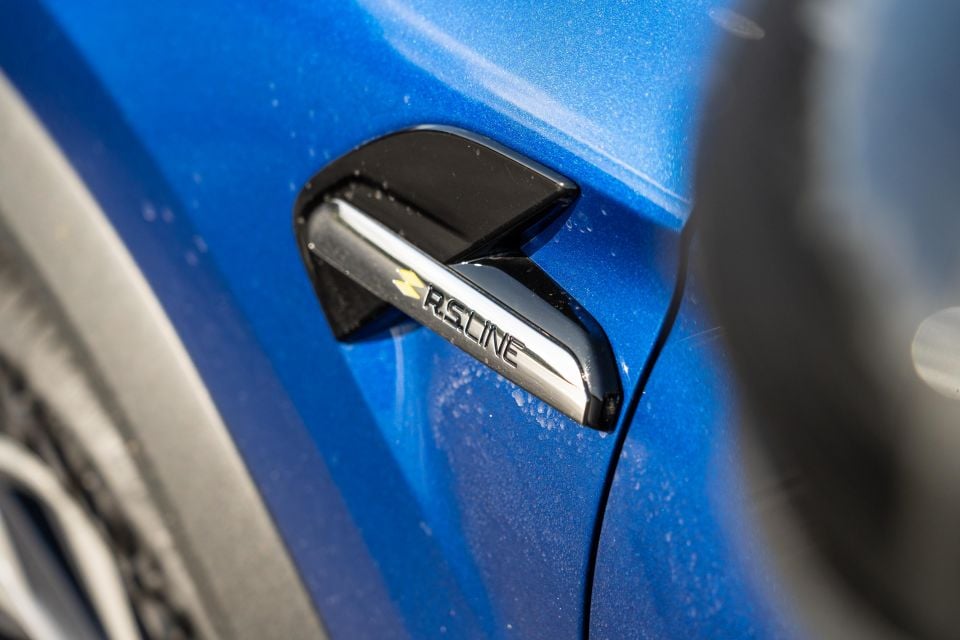

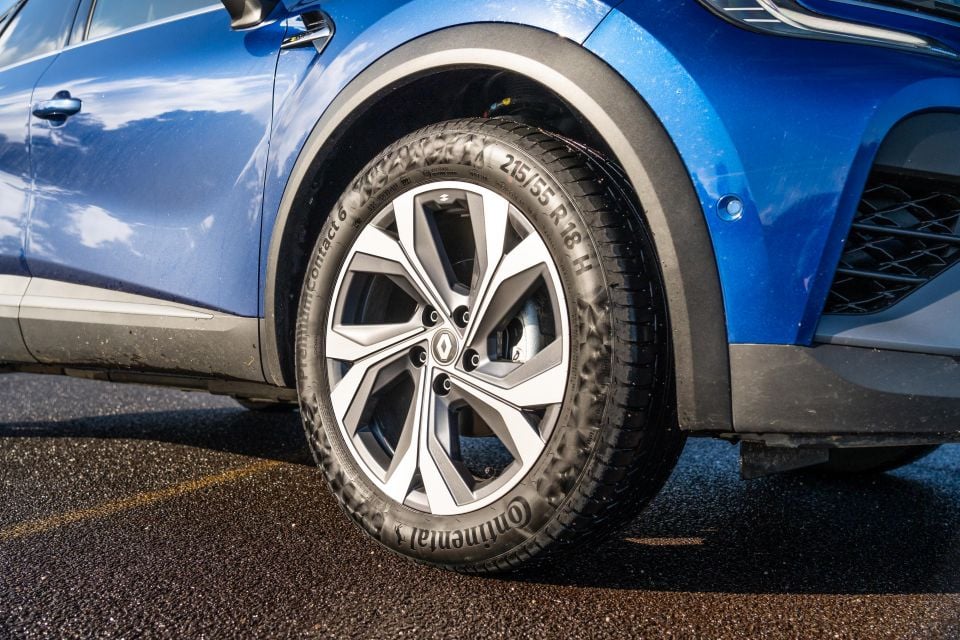
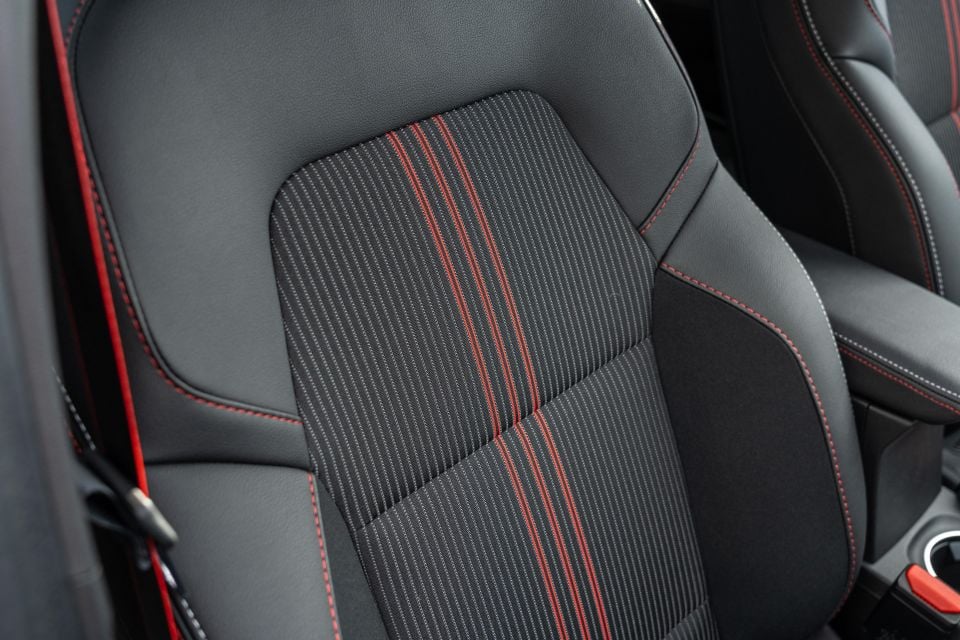
Features carried over from lower grades include:
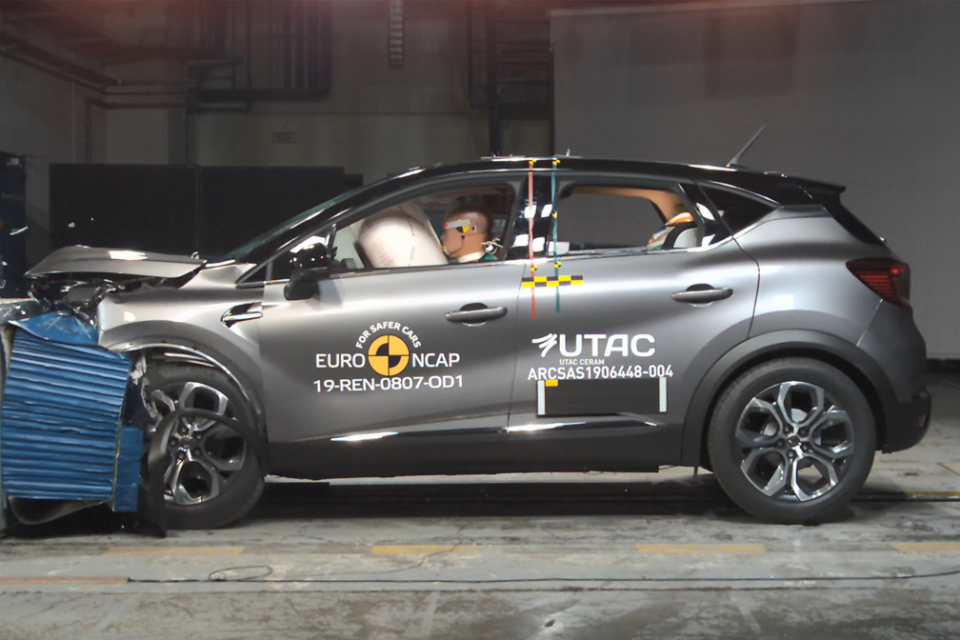
The Captur wears a five-star ANCAP safety rating based on Euro NCAP testing conducted in 2019.
It scored 96 per cent for adult occupant protection, 83 per cent for child occupant protection, 75 per cent for vulnerable road user protection, and 74 per cent for safety assist.
Standard safety features include:
Blind-spot monitoring and rear cross-traffic alert are available as standard from the Zen grade, and optional on the base Life. Adaptive cruise control with stop/go is now standard on the Zen, Intens and R.S. Line.
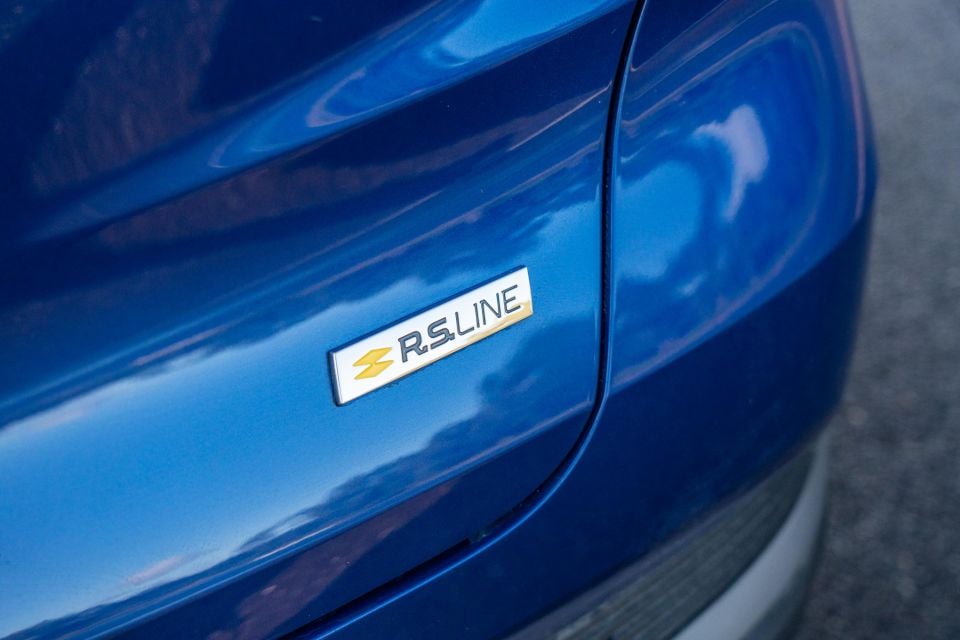
The Captur is backed by a five-year, unlimited-kilometre warranty and up to five years of 24/7 roadside assistance.
Servicing is required every 12 months or a lengthy30,000km, whichever comes first.
The first five visits are priced as follows:
In terms of real-world fuel consumption, we saw an indicated 7.1L/100km over 700km of mixed driving, including plenty of freeway stints and peak-hour commuting. Worth noting, on a freeway-only stint from Mulgrave to the Docklands, I saw as low as 4.9L/100km.
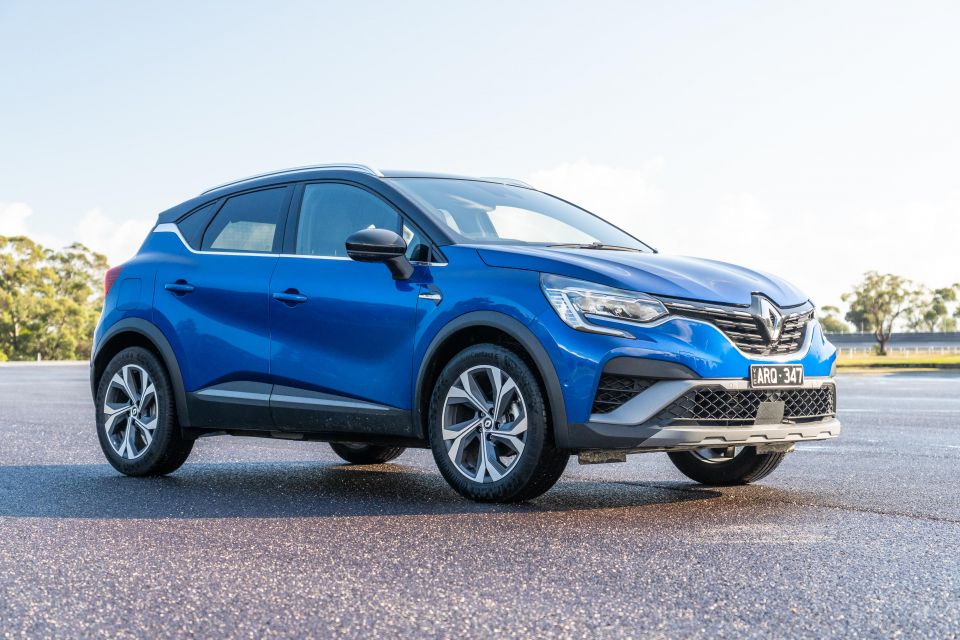
There’s no denying the Captur deserves to do better in the Australian market, it’s a good little car.
In R.S. Line guise however, it loses a little lustre. I think the penultimate Captur Intens is the pick of the range.
The $2500 premium over the Intens doesn’t really bring any meaningful features that you can’t add as an option. You can add the 10.25-inch digital instrument cluster to the Captur Intens for $800, but the rest of the R.S. Line accoutrement is hardly necessary.
Other than that the Captur impresses with its punchy turbo petrol engine, big-car feel on the road, spacious boot, and its funky Euro-chic design inside and out. It also has one of the nicest cabins in the Light SUV segment.
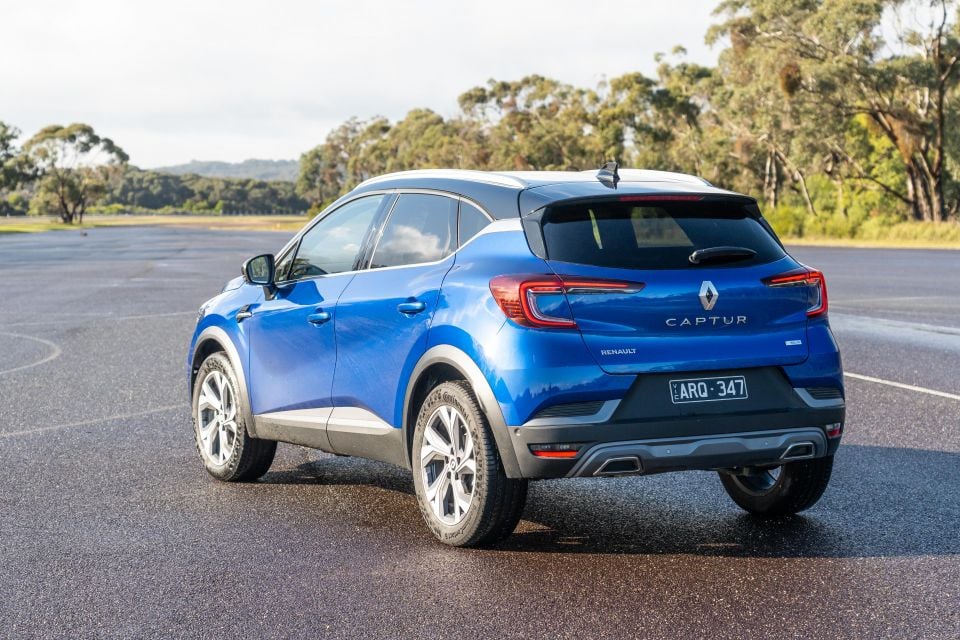
Click the images for the full gallery
Where expert car reviews meet expert car buying – CarExpert gives you trusted advice, personalised service and real savings on your next new car.
James Wong is an automotive journalist and former PR consultant, recognised among Australia’s most prolific motoring writers.


Matt Campbell
3 Hours Ago


William Stopford
19 Hours Ago


Josh Nevett
20 Hours Ago


Ben Zachariah
2 Days Ago


CarExpert.com.au
2 Days Ago


Damion Smy
2 Days Ago